Articles
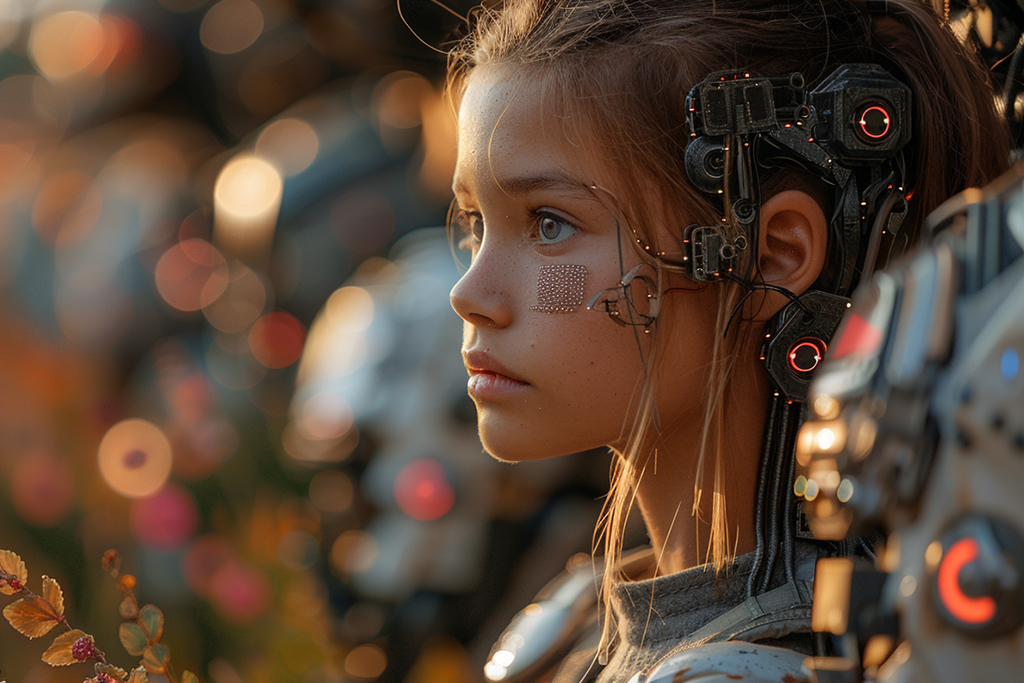
The Future of Humanity under the Influence of AI
Artificial intelligence has come a long way since its initial conceptualizations and developments in the mid-20th century. In its early days, AI was limited to specific and simple tasks, such as solving mathematical problems or playing chess. However, with technological advancements and the accumulation of large volumes of data, AI has evolved at an accelerated pace, transforming into a powerful and versatile tool that is radically changing various industries and aspects of everyday life.
Over the past few decades, some of us have witnessed AI transition from a scientific curiosity to a driving force of technological innovation. The advent of machine learning and deep learning has enabled AI systems to learn and improve autonomously, using vast amounts of data to identify patterns and make informed decisions. These advances have led to the creation of applications ranging from virtual assistants like Siri and Alexa to autonomous vehicles and personalized recommendation systems on platforms like Netflix and Amazon.
The importance of AI today cannot be underestimated. It has become an essential tool for optimizing processes, increasing efficiency, and improving accuracy in a variety of fields, including medicine, education, transportation, and the entertainment industry. In medicine, for example, AI systems are revolutionizing the diagnosis and treatment of diseases, allowing doctors to detect anomalies in medical images with unprecedented precision and develop personalized treatment plans based on genomic and medical history data. The strength of all this lies in the fact that anyone with a computer and some time can create a machine learning model capable of doing incredible things. I myself in 2023 created a system capable not only of recognizing diseases in the lungs but also of differentiating them; and this system goes much further, as it can also analyze images of bones, brain, muscles, and an infinite number of other fields. This is the power of computer vision.
In education, AI is transforming the way students learn and educators teach. Through adaptive learning platforms, students can receive personalized content and activities tailored to their pace and learning style, thereby improving their understanding and retention of information. Educators, in turn, can use data analysis tools to identify areas where students may need additional support and adjust their teaching methods accordingly. This is an enormous achievement in education today, as it ensures the quality of teaching. With this, instead of fostering our “factory of making fools,” we are ensuring that each student has the opportunity to pursue the career they desire. In China, in 2017, schools began using iPads equipped with artificial intelligence to personalize children's education. These devices learn the vocabulary each student recognizes and adjust exam content for each child based on this knowledge. This innovative tool facilitates understanding questions and promotes more effective, tailored teaching for each student. This advancement is part of a broader effort to integrate technology and AI into the Chinese educational system, thereby improving the quality of learning. An example Europe should have taken up and applied many years ago, both in schools and academies and universities.
In transportation, autonomous vehicles are beginning to redefine urban mobility and freight transport. Thanks to advances in computer vision and real-time data processing, these vehicles can navigate complex and dynamic environments with minimal human intervention, promising to reduce traffic accidents and improve transportation efficiency.
The entertainment industry has also been profoundly influenced by AI. Recommendation algorithms, which use user behavior data to suggest personalized content, have changed how we consume music, movies, and series. Additionally, AI is being used to create original content, from algorithmically generated music to movie and video game scripts.
As AI continues to advance, it is crucial to recognize both its immense opportunities and the challenges it poses. Responsible implementation of AI is essential to maximize its benefits while minimizing risks. In the next five years, AI's influence on society will only intensify, and it is vital to be prepared to navigate this future with a clear vision and a well-defined strategy.
The evolution of AI to the present has laid the foundation for significant transformation in nearly every aspect of human life. Its importance today is undeniable, and its potential for the future is immense. The key to fully harnessing this potential lies in a balanced approach that combines technological innovation with ethical and social considerations, ensuring that AI is used in a way that benefits all of humanity.
In recent years, artificial intelligence has experienced notable technological advancements that have expanded its capabilities and applications. These developments have been driven by improvements in algorithms, increased processing capacity, and access to large amounts of data. The fierce competition between 2022 and 2024 among major companies has fostered rapid progress, which I personally believe is very positive.
One of the most significant developments has been in the field of deep learning algorithms. Deep neural network models, such as convolutional neural networks (CNN) and recurrent neural networks (RNN), have demonstrated exceptional performance in complex tasks such as image recognition and automatic translation. The introduction of more sophisticated architectures, such as generative adversarial networks (GAN) and transformers, has enabled researchers to create models that can generate original content, from images and music to coherent and realistic texts.
The development of new AI applications in various areas has been equally impressive. In the healthcare sector, as mentioned earlier, AI is revolutionizing the diagnosis and treatment of diseases. Machine learning algorithms are being used to analyze medical images, identify patterns in genomic data, and predict the progression of chronic diseases. These advances are improving diagnostic accuracy and enabling more personalized and effective treatments. This is something we must foster, but unfortunately, due to our reluctance to share our “data,” this field is severely affected.
Advances in general artificial intelligence (AGI) are also gaining momentum. Although we are still far from achieving AI with human-comparable intelligence (I personally believe we have already matched it, but there are still some things it cannot do. Maybe it lacks hands…), researchers are making significant progress in developing systems that can learn and adapt to a variety of tasks. These systems, known as AGI, have the potential to radically transform the way we interact with technology and tackle complex problems in a more flexible and efficient manner.
Innovations in deep learning are not limited to algorithm improvements. The increase in processing capacity, thanks to advances in hardware such as graphics processing units (GPU) and tensor processing units (TPU), has allowed researchers to train larger and more complex models in less time. Additionally, access to large volumes of data, facilitated by the proliferation of connected devices and the digitization of information (the example of IoT), has been crucial for the development and implementation of advanced AI systems.
Technological advances in artificial intelligence in recent years have been extraordinary, greatly expanding its capabilities and applications. From healthcare and education to transportation and entertainment, AI is transforming various sectors and promising a future where technology and human intelligence work together to solve complex problems and improve the quality of life. As we continue to explore and develop these technologies, it is essential to address the ethical and social challenges that arise to ensure that the benefits of AI are distributed equitably and responsibly.
Artificial intelligence is having a profound and multifaceted impact on the labor market. As AI systems become more advanced and capable, they are transforming the nature of work in various industries, creating new job opportunities while also displacing certain traditional jobs. This dynamic change presents both challenges and opportunities for workers and global economies.
One of the most visible effects of AI on the labor market is the automation of repetitive and routine tasks. In sectors such as manufacturing, logistics, and retail, robots and automated systems are replacing human workers in activities that are tedious and require constant precision. For example, in warehouses, robots are being used to pick and pack products, increasing efficiency and reducing human errors. However, this automation also means that many workers are losing their jobs, posing significant social and economic challenges. Although a person always has the option to adapt, learn something new, and evolve… Of course, here, government support comes into play, something not all governments provide….
Although automation is eliminating certain jobs, it is also creating new job opportunities in areas that require advanced technical and analytical skills. The development, implementation, and maintenance of AI and robotics systems require a workforce with knowledge in engineering, programming, and data analysis. Additionally, there is a growing demand for professionals who can interpret and use the results generated by these systems to make informed decisions. As a result, we are seeing an increase in demand for AI specialists, data scientists, and cybersecurity experts.
The impact of AI on the labor market is also driving an urgent need for labor reskilling and continuous training. Workers whose tasks are being automated need to acquire new skills to remain relevant in the labor market. This has led to an increase in the availability of training programs in digital and technological skills, offered by both educational institutions and private companies. Education and vocational training are adapting to include competencies in programming, data analysis, and AI system management, preparing workers for the jobs of the future; and here, I take the opportunity to recommend my books and my training courses.
In the services sector, AI is transforming the way many administrative and customer service tasks are performed. Chatbots and virtual assistants, powered by natural language processing algorithms, are being used to handle customer inquiries, schedule appointments, and perform other routine administrative tasks. This not only improves efficiency and reduces costs but also allows human employees to focus on more complex and value-added tasks, such as problem-solving and strategic decision-making.
The technology sector, in particular, is experiencing significant transformation due to AI. Technology companies are at the forefront of developing and implementing AI systems, creating numerous jobs in research and development, software engineering, and project management. These companies are also exploring new applications of AI in areas such as augmented reality, virtual reality, and the Internet of Things (IoT), promising to open even more job opportunities in the future.
However, the transition to an AI-driven labor market is not without challenges. One of the main challenges is the inequality in the distribution of AI benefits. Regions and sectors with access to advanced technologies and a highly skilled workforce are better positioned to take advantage of the opportunities created by AI, while regions and sectors with fewer resources may be left behind. This can exacerbate economic and social disparities, both nationally and globally.
Furthermore, AI raises important ethical and equity issues in the workplace. I will delve deeper into this in the following paragraphs. Automated decision-making and the use of algorithms in processes such as personnel selection and performance evaluation can perpetuate existing biases and discrimination if not carefully designed and implemented. It is crucial for companies and AI developers to proactively address these challenges, ensuring that AI systems are transparent, fair, and accountable.
The rapid expansion of artificial intelligence has posed a series of ethical and regulatory challenges that must be addressed to ensure the responsible and beneficial use of this technology. As AI becomes increasingly integrated into various aspects of daily life and a wide range of industries, it is crucial to develop ethical frameworks and regulations that guide its development and implementation.
One of the main ethical challenges related to AI is algorithmic bias. AI systems learn from data that often reflect societal prejudices and inequalities. As a result, these biases can be incorporated into AI models, perpetuating and amplifying discrimination in areas such as hiring, lending, and access to services. For example, a hiring algorithm could discriminate against certain demographic groups if the training data reflect a historical bias in hiring decisions. To mitigate this problem, it is essential for AI developers to implement bias auditing and adjustment strategies in their models. Lately, we only hear about “generative AI,” but everyone forgets that AI is AI, and the foundation of AI is based on “discriminative AI.” So, while Midjourney can create an image, the fundamentals of this system are discriminative. We have seen this with the generation of images with Gemini, etc. These are problems that cannot be avoided and require much and constant work.
Data privacy is another crucial ethical issue in the realm of AI. AI systems often require large amounts of personal data to function effectively. This raises concerns about how this data is collected, stored, and used. Protecting users' privacy is essential to maintaining public trust in AI technologies. Data privacy regulations, such as the General Data Protection Regulation (GDPR) in the European Union, establish strict guidelines on the handling of personal data, and it is likely that more regions will adopt similar frameworks to protect individuals' privacy.
Autonomous decision-making by AI systems also poses significant ethical challenges. As AI algorithms become more sophisticated, they are being used to make critical decisions in areas such as medicine, transportation, and justice. However, the lack of transparency in how these decisions are made can lead to a lack of accountability and responsibility. For example, in the criminal justice field, the use of AI systems to predict an individual's likelihood of reoffending has been criticized for its opacity and potential to reinforce existing biases. To address these issues, it is essential for AI systems to be transparent, and for clear accountability mechanisms to be in place.
The development of regulatory frameworks for AI is essential to ensure that this technology is used ethically and responsibly. Governments and international organizations are beginning to recognize the need to regulate AI use. In the European Union, for example, proposals are being developed to regulate AI, focusing on areas such as transparency, safety, and the protection of fundamental rights. These regulations aim to ensure that AI systems are safe and that their use does not infringe on individuals' rights.
The role of international organizations in regulating AI is also crucial. Entities such as the United Nations (UN) and the Organisation for Economic Co-operation and Development (OECD) are working to develop guidelines and recommendations for the ethical use of AI at a global level. These organizations can provide a common framework that guides countries in implementing AI policies and regulations, ensuring a coherent and coordinated approach at the international level.
In addition to government regulations, companies and AI developers also play an important role in promoting AI ethics. Companies should establish their own ethical policies and practices to guide the development and use of AI systems. This may include creating ethics committees, conducting ethical impact assessments, and implementing ethics training programs for their employees. By taking proactive steps to address ethical concerns, companies can help ensure that AI is developed in a way that benefits society as a whole.
Ethics and regulations are essential components for the responsible development and implementation of artificial intelligence. Addressing challenges such as algorithmic bias, data privacy, and autonomous decision-making is crucial to ensuring that AI is used in a way that respects human rights and values. Developing regulatory frameworks and promoting ethical practices by governments, international organizations, and companies are fundamental steps to ensure that AI benefits all of humanity in a fair and equitable manner.
AI applications promise to revolutionize how we live, work, and care for ourselves in unprecedented ways, offering more personalized, efficient, and accessible solutions.
Additionally, AI is facilitating the development of personalized treatments. By analyzing genomic data and medical history, AI systems can predict how a patient will respond to different treatments, allowing doctors to design personalized treatment plans that maximize effectiveness and minimize side effects. This is especially useful in treating complex diseases such as cancer and autoimmune diseases, where the response to treatment can vary significantly between different patients.
AI is also improving accessibility in education. AI systems can translate educational content into different languages and adapt materials for students with disabilities, ensuring that all students have access to quality education. For example, voice recognition systems can transcribe classes in real-time for students with hearing impairments, while natural language processing algorithms can simplify text for students with learning difficulties.
Regarding resource management and the environment, AI is being used to optimize the use of natural resources and reduce environmental impact. In agriculture, AI systems are helping farmers make more informed decisions about water, fertilizer, and pesticide use. Drones equipped with sensors and cameras can collect data on crop status, and AI algorithms can analyze this data to provide recommendations on when to irrigate, fertilize, or harvest. This not only improves crop yield but also reduces resource use and environmental impact.
In the energy sector, AI is being used to improve the efficiency and sustainability of energy production and consumption. AI systems can predict energy demand more accurately, allowing energy providers to optimize energy production and distribution. Additionally, AI algorithms can analyze sensor data in real-time to detect equipment failures and predict when repairs will be needed, reducing downtime and maintenance costs.
Waste management is another area where AI is making a significant difference. Automated sorting systems powered by AI can separate recyclable waste from non-recyclable waste more accurately and quickly than traditional methods. This not only improves the efficiency of recycling programs but also reduces the amount of waste that ends up in landfills. If we promoted this field more, we would achieve a significant advancement for humanity and climate change.
Autonomous vehicles, equipped with AI systems, are beginning to operate on the roads, promising to reduce traffic accidents and improve transportation efficiency. These vehicles use a combination of sensors, cameras, and computer vision algorithms to navigate complex and dynamic environments with minimal human intervention. Additionally, AI-powered traffic management systems can optimize traffic flow in cities, reducing congestion and improving air quality.
AI is also improving quality of life through applications in the smart home. Virtual assistants, such as Alexa and Google Assistant, use natural language processing algorithms to interact with users and control smart home devices. These systems can learn users' preferences and automate everyday tasks, such as adjusting the temperature, turning lights on and off, and playing music, thereby improving home comfort and efficiency. Not to mention other appliances such as washing machines, robot vacuums, dishwashers, or refrigerators.
As AI technology continues to advance, we are likely to see even more innovations that transform the way we live and work, improving our quality of life in ways we are only beginning to imagine.
Despite the countless benefits and advances that artificial intelligence offers, it also carries a series of risks and threats that cannot be ignored. The increasing adoption of AI in various aspects of life poses significant challenges in terms of security, employment, and ethics, among others. Below, I explore some of the main threats associated with AI and the measures necessary to mitigate them.
One of the primary threats of AI is cybersecurity. AI systems can be vulnerable to malicious attacks, which can compromise the integrity and privacy of data. Adversarial attacks, where attackers manipulate input data to deceive AI algorithms, represent a growing concern. For example, an attacker could subtly alter an image to make an image recognition system incorrectly identify a person or object. Additionally, AI systems that control critical infrastructure, such as the power grid or transportation systems, can be targets of cyberattacks, with potentially disastrous consequences. To mitigate these risks, it is crucial to develop robust cybersecurity techniques specific to AI, as well as establish rapid incident response protocols.
Autonomous weapons, also known as lethal autonomous weapon systems, represent another significant threat. These systems use AI to select and attack targets without human intervention. While they may offer tactical advantages on the battlefield, they also pose serious ethical and security concerns. There is a risk that such weapons will be used irresponsibly or fall into the wrong hands, which could lead to uncontrolled conflicts and escalations. The international community must work together to establish clear regulations and treaties governing the development and use of autonomous weapons, ensuring they remain under significant human control.
Mass unemployment is another risk associated with the proliferation of AI. As automation and AI systems replace human workers in various industries, many people may lose their jobs. Sectors such as manufacturing, logistics, and retail are particularly vulnerable to automation, which could result in significant job losses. This transformation of the labor market can lead to increased economic and social inequality, disproportionately affecting workers with fewer technical skills. To mitigate this impact, it is essential to implement retraining and continuous education programs that prepare workers for the new job opportunities created by the AI-driven economy.
Excessive reliance on AI also poses significant risks. As we increasingly rely on AI systems to make critical decisions, from medical diagnoses to financial decisions, there is a danger that errors or system failures will have severe consequences. The opacity of many AI algorithms, often described as a "black box," makes it difficult to understand and explain their decisions, which can lead to a lack of accountability and transparency. To address this problem, it is crucial to develop methods to make AI systems more explainable and transparent, allowing humans to better understand and oversee the decisions made by AI.
AI can also be used to spread misinformation and manipulate public opinion. AI algorithms can generate and disseminate fake news and manipulative content on a large scale, affecting public perception and social stability. Social networks, in particular, are vulnerable to these tactics, which can influence elections and other democratic processes. To combat misinformation, it is necessary to develop AI tools that can detect and counter false content, as well as promote digital literacy and critical thinking among internet users.
Furthermore, AI can exacerbate existing inequalities if not implemented equitably. Unequal access to AI technology can widen the gap between rich and poor countries and regions, as well as between individuals with different levels of education and economic resources. Companies and governments must work together to ensure that the benefits of AI are distributed fairly, investing in technological infrastructure and educational programs that enable all segments of society to take advantage of the opportunities AI offers.
While artificial intelligence has the potential to transform many aspects of life positively, it also presents a series of significant risks and threats. Cybersecurity, autonomous weapons, mass unemployment, excessive reliance, misinformation, and inequalities are challenges that must be urgently addressed. Mitigating these risks requires a multifaceted approach that includes implementing robust policies and regulations, developing advanced security technologies, promoting education and training, and international collaboration. Only through a concerted effort can we ensure that AI is used safely, ethically, and beneficially for all humanity.
The interaction between artificial intelligence and human creativity is creating a new paradigm where technology not only automates repetitive tasks but also collaborates in creative processes. This collaboration is revolutionizing fields such as art, music, literature, and design, opening new possibilities for expression and innovation.
In the realm of art, AI is playing an increasingly important role. Deep learning algorithms can analyze and replicate artistic styles, allowing the creation of works that combine elements from different eras and artists. A notable example is the use of generative adversarial networks (GAN) to create original paintings that are often indistinguishable from human-made works. These techniques allow artists to explore new forms of expression and experiment with unusual combinations of styles and techniques.
The collaboration between human artists and AI systems is leading to exhibitions and projects that challenge traditional notions of art and authorship.
In music, AI is being used to compose original pieces and collaborate with musicians in creating new works. Advanced algorithms can analyze vast libraries of music to identify patterns and structures, generating compositions that reflect a variety of styles and genres. For example, systems like AIVA (Artificial Intelligence Virtual Artist) can compose classical music used in films, video games, and other media. Additionally, musicians are using AI as a creative tool, employing it to generate ideas, explore new melodies and harmonies, and collaborate in real-time during the composition process. This interaction between AI and human musicians is pushing the boundaries of musical creativity and producing innovative results.
Literature is another field where AI is making significant inroads. Language models like GPT-3 can generate coherent and creative texts, from poetry and short stories to journalistic articles and scripts. These systems can be used by writers as tools to overcome creative blocks, generate ideas, and explore different narrative styles. By collaborating with AI systems, authors can experiment with complex narrative structures and develop characters and plots in novel ways. Although the authorship of AI-generated texts raises ethical and legal questions, the combination of human creativity and AI's generative capability is producing innovative and stimulating literary works.
In design, AI is transforming how designers approach their projects. Generative design algorithms can create multiple iterations of a design based on specific parameters, allowing designers to explore a wide range of options in a short time. These tools are particularly useful in fields like architecture and industrial design, where optimization and functionality are crucial. For example, AI systems can analyze factors such as energy efficiency and sustainability to suggest building designs that maximize the use of natural resources. Designers can collaborate with AI to refine their ideas and produce more innovative and efficient solutions.
AI is also enhancing human creativity in product and service development. Companies are using AI systems to analyze consumer preferences and behaviors, generating ideas for new products that align with market trends. AI algorithms can identify patterns in customer data and suggest product features that might succeed. This collaboration between AI and humans is accelerating the innovation process and enabling companies to respond more quickly to market demands.
The impact of AI on human creativity is not limited to content generation. It is also facilitating the democratization of creativity by making advanced tools available to a wider audience. AI-powered platforms and applications allow people without technical training to create high-quality art, music, and design. This is broadening access to creativity and enabling more people to participate in creative processes, regardless of their previous experience or skills.
However, the integration of AI into creative processes also poses challenges. One of the main challenges is the issue of authorship and intellectual property rights. When a work is created in collaboration with AI, the question arises of who owns the rights to that work. Current intellectual property laws are not fully equipped to handle these situations, requiring updates to legal frameworks to reflect the new realities of collaborative creation between humans and machines.
Another challenge is ensuring that AI systems used in creative processes are ethical and transparent. It is important that AI algorithms do not perpetuate biases or discrimination present in training data. Developers and users of AI must work to ensure that systems are fair and equitable and that generative decisions are understandable and justifiable.
The collaboration between artificial intelligence and human creativity is revolutionizing multiple fields, from art and music to literature and design. AI is not only automating creative tasks but also expanding the possibilities of human expression and facilitating the democratization of creativity. However, it is crucial to address the ethical and legal challenges that arise with this integration, ensuring that AI systems are fair, transparent, and respect authorship rights. As we continue to explore the intersections between AI and creativity, we are likely to see an unprecedented era of innovation that transforms how we conceive and realize art and design.
The interaction between humans and artificial intelligence is rapidly evolving, transforming how we live, work, and communicate. As AI systems become more advanced and accessible, the future of this interaction promises to be even more integrated and intuitive, with significant impacts on everyday life, work, and human relationships.
The development of more intuitive and natural interfaces for interacting with AI is one of the most promising areas. Advances in natural language processing are enabling AI systems to understand and respond to user instructions more accurately and contextually. This facilitates communication between humans and machines, allowing more fluid and effective interactions. For example, virtual assistants like Siri, Alexa, and Google Assistant are already capable of understanding and executing complex commands, and their ability to maintain natural conversations is constantly improving. In the future, these assistants will be able to understand more subtle nuances of human language, such as tone, emotion, and context, making the interaction even more personalized and efficient.
Advances in voice recognition technology and computer vision are also improving how we interact with AI systems. Voice recognition systems are being trained to understand a variety of accents and dialects, increasing their accessibility and usability. Computer vision, on the other hand, allows AI systems to recognize and respond to gestures and facial expressions, creating a richer and more multidimensional interaction. These developments are leading to the creation of multimodal interfaces that combine voice, vision, and gestures, offering a more immersive and natural user experience.
The evolution of virtual assistants and personal robots is redefining the concept of help and support in everyday life. Domestic robots, equipped with advanced AI, are beginning to take on household tasks such as cleaning, cooking, and elderly care. These robots not only perform specific tasks but also learn from users' preferences and routines, adapting to their needs and offering personalized assistance. In the future, personal robots will be capable of performing an even wider range of tasks, from home management to emotional and social support, significantly improving people's quality of life.
In the workplace, collaboration between humans and AI systems is transforming the nature of work and increasing productivity. As previously explained, AI systems are being used to automate routine and analytical tasks, freeing workers to focus on activities that require creativity, judgment, and interpersonal skills. In medicine, for example, AI systems are helping doctors analyze patient data and diagnose diseases more quickly and effectively, allowing doctors to spend more time on direct patient care. In engineering, AI systems are optimizing design and production, enabling engineers to focus on innovation and solving complex problems.
The interaction between humans and AI systems is also having a significant impact on education. AI-powered tutors and educational assistants are personalizing learning for students of all ages, adapting content and teaching pace to the individual needs of each student. This is allowing more inclusive and effective education, where students can progress at their own pace and receive additional support when needed. In the future, AI systems in education will be able to provide real-time feedback, identify areas for improvement, and suggest additional resources, creating a more dynamic and adaptive learning environment.
The relationship between humans and AI systems is also influencing how we relate to each other. Social media platforms and communication applications are using AI algorithms to facilitate connection and interaction between people, recommending relevant content, friends, and events. These algorithms are improving how we discover and share information, creating richer and more diverse networks. However, they also pose challenges in terms of privacy, bias, and information manipulation, which must be managed carefully to ensure ethical and fair interaction.
As AI becomes more deeply integrated into our lives, we are also seeing the emergence of ethical and philosophical questions about the nature of human-AI interaction. Dependence on AI systems for critical decision-making raises questions about autonomy, responsibility, and accountability. It is crucial to develop ethical frameworks and clear regulations that guide the use of AI, ensuring that these technologies are used in ways that respect individual rights and dignity.
The future of human-artificial intelligence interaction promises to be profoundly transformative. With the development of more intuitive and natural interfaces, the evolution of virtual assistants and personal robots, and the integration of AI into various aspects of everyday life and work, we are entering a new era of human-machine collaboration. However, it is essential to address the ethical and social challenges that arise with this interaction, ensuring that AI is used in a fair, transparent, and beneficial way for all humanity. As we move towards this future, we must maintain a balanced approach that combines technological innovation with a commitment to human values and ethics.
My conclusion
Artificial intelligence has established itself as a transformative force in modern society, with significant impacts across a variety of fields ranging from medicine and education to transportation and creativity. As we look to the future, it is essential to recognize both the immense opportunities and the significant challenges that AI presents for humanity. In this conclusion, I recap the main opportunities and challenges posed by AI, reflect on the balance between creation and destruction, and offer perspectives for a future where AI and humans coexist harmoniously and beneficially.
The opportunities offered by artificial intelligence are vast and varied. In medicine, AI has the potential to revolutionize the diagnosis and treatment of diseases, improving the accuracy and personalization of healthcare. AI systems can analyze large volumes of medical data to identify patterns that humans might overlook, enabling earlier diagnoses and more effective treatments. In education, AI is transforming the way students learn, offering personalized learning experiences that adapt to individual needs and paces. This not only improves knowledge retention but also makes education more inclusive and accessible.
In transportation, AI promises a revolution in mobility with the development of autonomous vehicles that can reduce traffic accidents and improve transportation efficiency. Advances in computer vision and real-time data processing allow these vehicles to navigate safely and efficiently, potentially transforming cities and reducing traffic congestion. In resource management, AI is optimizing the use of natural resources and improving environmental sustainability. AI systems can analyze real-time data to make recommendations on the use of water, energy, and other resources, contributing to more efficient and sustainable management.
Human creativity is also being enhanced by AI, with algorithms collaborating in the creation of art, music, literature, and design. These collaborations are pushing the boundaries of human creativity, allowing the exploration of new ideas and styles. AI is not only automating creative tasks but also facilitating the democratization of creativity, making advanced tools available to a wider audience.
However, along with these opportunities come significant challenges. One of the most pressing challenges is algorithmic bias, where AI systems perpetuate and amplify biases present in training data. This can lead to discriminatory decisions in areas such as hiring, justice, and access to services. Data privacy is also a crucial concern, as AI systems often require large amounts of personal data to function effectively. Protecting user privacy is essential to maintaining public trust in AI technologies.
Autonomous decision-making by AI systems poses significant ethical challenges. The lack of transparency in how these decisions are made can lead to a lack of accountability and responsibility. Additionally, excessive reliance on AI for critical decision-making can have severe consequences in case of errors or system failures. It is crucial to develop methods to make AI systems more explainable and transparent, allowing humans to better understand and oversee the decisions made by AI.
The impact of AI on employment is another important challenge. While AI is creating new job opportunities in technical and analytical areas, it is also displacing traditional jobs, which can lead to increased economic and social inequality. Labor reskilling and continuous training are essential to prepare workers for the new job opportunities created by the AI-driven economy.
Cybersecurity is a growing concern as AI systems are more deeply integrated into critical infrastructures. Adversarial attacks and other types of cyberattacks can compromise the integrity and privacy of data, as well as the security of AI-controlled systems. Developing robust cybersecurity techniques specific to AI and establishing rapid incident response protocols are essential.
Ethics and regulations play a crucial role in the responsible use of AI. It is necessary to develop regulatory frameworks and clear policies that guide the development and implementation of AI, ensuring these technologies are used ethically and responsibly. International collaboration and the promotion of ethical practices by companies are fundamental steps to ensure AI benefits all humanity in a fair and equitable manner.
Artificial intelligence presents both immense opportunities and significant challenges for humanity. The key to fully harnessing this potential lies in a balanced approach that combines technological innovation with ethical and social considerations. As we move towards a future where AI and humans coexist harmoniously and beneficially, it is essential to maintain a commitment to human values and ethics. With a concerted and collaborative effort, we can ensure that AI is used in ways that benefit all humanity, creating a more just, equitable, and sustainable future.
I say YES to AI!
The future of the human-AI relationship has the potential to be highly positive for humans, providing significant advancements in quality of life, efficiency, and creativity, provided that ethical and social challenges are appropriately addressed. With a balanced and regulated approach, AI can complement and enhance human capabilities, creating a beneficial and harmonious coexistence.






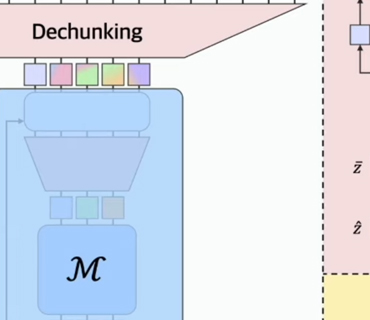



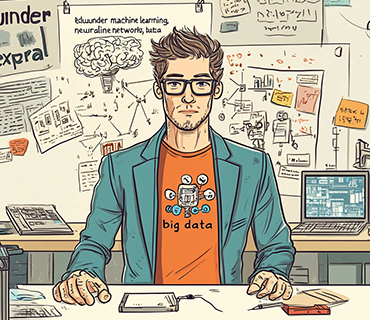
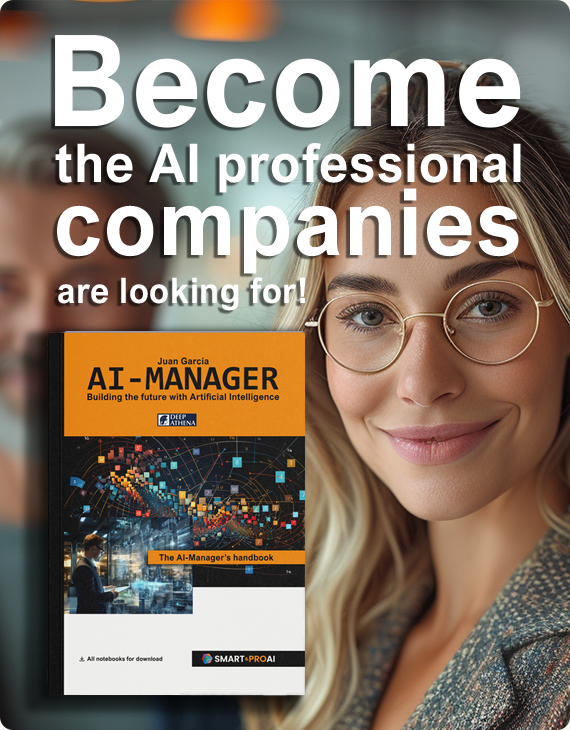

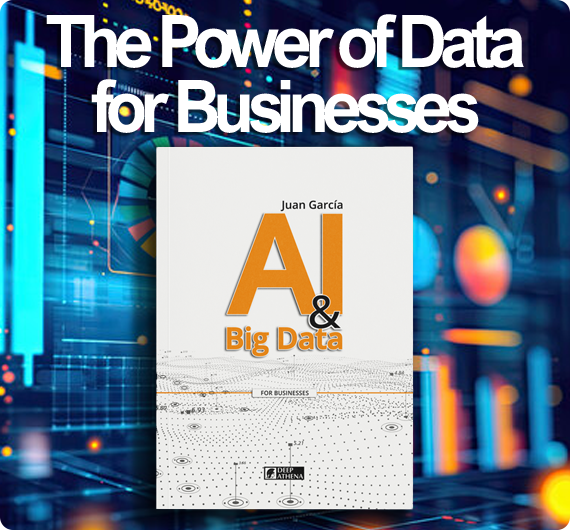
The Author
Juan García
Juan García is an Artificial Intelligence Expert, Author, and Educator with over 25 years of professional experience in Industrual Businesses. He advises companies across Europe on AI Strategy and Project Implementation and is the Founder of DEEP ATHENA and SMART &PRO AI. Certified by IBM as an Advanced Machine Learning Specialist, AI Manager and Professional Trainer, Juan has written several acclaimed Books on AI, Machine Learning, Big Data, and Data Strategy. His Work focuses on making complex AI Topics accessible and practical for Professionals, Leaders, and Students alike.
More